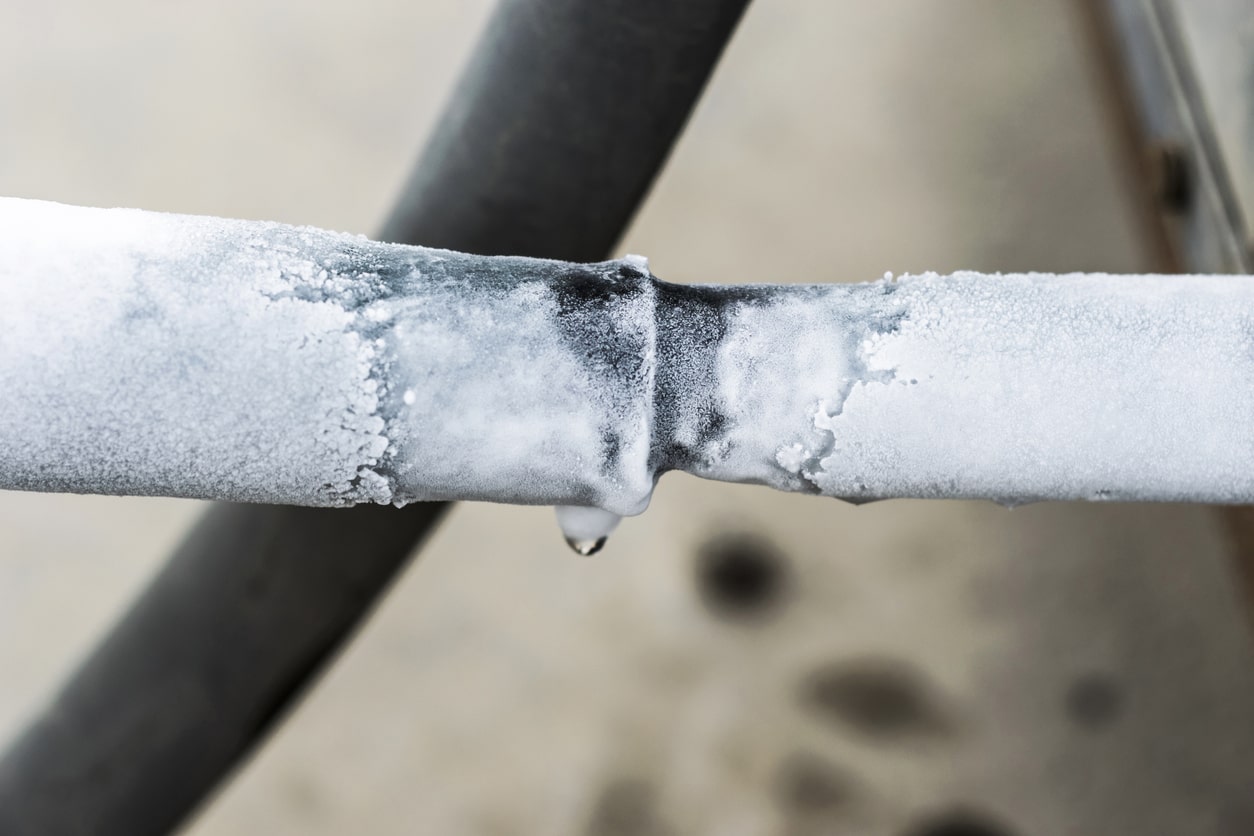
In the frigid winter months, whether you’ll have to deal with frozen pipes is not a question of “if” but “when”. If you’ve found that your pipes have frozen over, thawing them out safely is crucial to ensure that you do not cause further damage to your pipes or even your home.
How you thaw a frozen pipe is crucial. Here are some methods to help you get the water flowing and to help you avoid a burst pipe and potentially damaging flood at your property.
Locating the Frozen Pipe
First, determine which pipe or pipes are frozen. Turn on the faucets, and if no water comes out, or only a trickle escapes, then a pipe leading to the faucet is likely frozen.
With exposed pipes, such as pipes under sinks, you may be able to see the frozen portion. If the blockage is located in part of the pipe that you have access to, you will have more options for easily thawing.
Open the faucet that the pipe feeds water into to relieve pressure in the system and allow water to escape once you begin to thaw the pipe.
Thawing Exposed Pipes
Begin the thawing process near the faucet then work your way down to the blockage to ensure that the melting ice and steam is able to escape through the open faucet; otherwise, melting ice could get stuck behind the blockage, creating more pressure in the pipe and increasing the chances the pipe will burst.
If the frozen pipe is located in an area you can easily access, you have several options for attempting to thaw the pipe. Apply heat until the water escaping from the faucet returns to full strength.
Your thawing options include:
- Hair Dryer – Simply turn the dryer on and point the heat at the pipe, beginning with the portion closest to the faucet. Avoid coming into contact with water when operating the device.
- Space Heater – You can use a heat lamp or portable space heater. The indirect heat can help to quickly thaw. Comply with the safety measures and precautions of the particular device!
- Hot Towels – Dip towels in hot water and wrap around the pipe to slowly thaw the blockage.
- Electrical Heating Tape – Apply electrical heating tape directly to the pipe to distribute heat throughout.
Thawing Enclosed Pipes
If your pipes are enclosed, you’ll need to use a few different methods. Thawing options for enclosed pipes include:
- Turn the Heat Up – Increase the temperature in the property to help melt the ice blockage.
- Infrared Lamp – If you know where the frozen pipe is located, you can attempt to thaw the blockage by placing an infrared lamp in front of the portion of the wall where the pipe is located. The heat from the lamp may be able to penetrate the wall and allow the pipe to defrost.
- Cut Out a Section of the Wall – If you are comfortable doing so, you can cut out the section of the drywall in front of the frozen pipe to easily access the pipe. You can then use one of the methods for thawing an enclosed pipe.
Never attempt to thaw a pipe using an open flame, such as a propane torch! This can not only damage the pipe but may start a fire.
Pipe Bursts
If a frozen water pipe bursts, shut off the main water line to prevent additional water from flowing and damaging your property. There may be smaller shut-off valves located near sinks and toilets, but the main shut-off valve is often located near the water meter. Don’t hesitate to contact a plumber or other professional to remedy the problem for you.
Before attempting any home maintenance on objects around your house, make sure to be careful and have a comprehensive Homeowners Insurance policy. If there is any damage, you will want to be covered!
About Sine Insurance
At Sine Insurance Group, we are dedicated to providing you with custom-tailored insurance policies to protect your assets. Our comprehensive packages have been expertly crafted to serve St. Louis and the surrounding areas for the past 25 years. For more information about our products, contact us today at (636) 947-1177.

